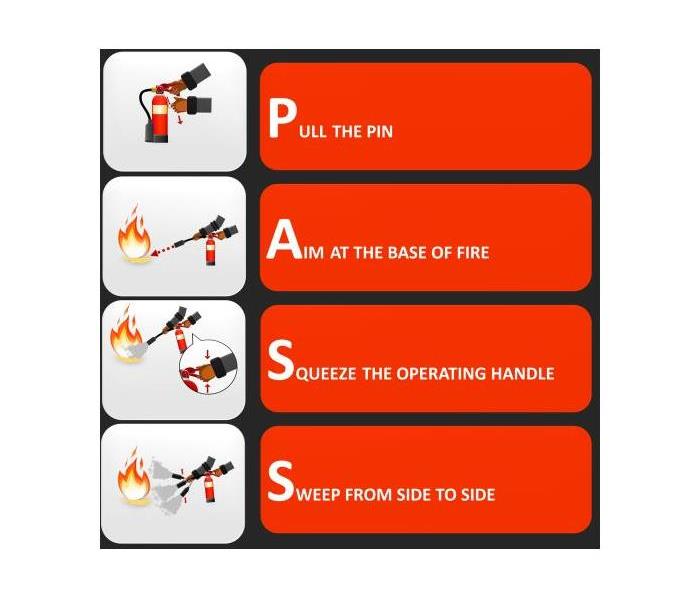3 Steps To Prepare To Use a Fire Extinguisher
5/25/2022 (Permalink)
Three Steps To Prepare To Use a Fire Extinguisher
Extinguishers for fire are essential safety equipment, but many people are not sure how to use these tools when the flames are rising. Here are three steps that an employee delegated fire safety responsibilities or a manager of a commercial property can take to prepare to effectively use a fire extinguisher at a building in Lafayette, LA.
1. Check the Class of Extinguisher
There are five main extinguisher classes: A, B, C, D and K. Class A extinguishers are best for combustible solid materials. Class B extinguishers are formulated for flammable liquids and gasses. Use Class C extinguishers for electrical fires, Class D extinguishers for metallic fires and Class K extinguishers for cooking fires.
2. Check the Fire Extinguisher Date
An extinguisher must be functional in order to limit the need for fire damage restoration. Check the label or cylinder body of the canister for a date. The plastic ring or boot of an extinguisher can cover the date. Based on the date, it may be necessary to refill or replace the extinguisher.
3. Memorize the PASS Method
The acronym PASS stands for Pull, Aim, Squeeze and Sweep. Suppress a fire by pulling the extinguisher pin, aiming the nozzle at the base of the fire, squeezing the lever and sweeping the fire suppressant spray from side to side. The spray from an extinguisher can spread a kitchen fire involving grease. Smother a grease fire with a heat-resistant pot lid or powder suppressants such as baking soda and salt.
You should always use a fire extinguisher as intended. Set yourself up for success beforehand by checking to make sure that the fire suppressants in an extinguisher are rated for efficacy at putting out the substances that are most likely to ignite in each area of a commercial building in Lafayette, LA.





 24/7 Emergency Service
24/7 Emergency Service
